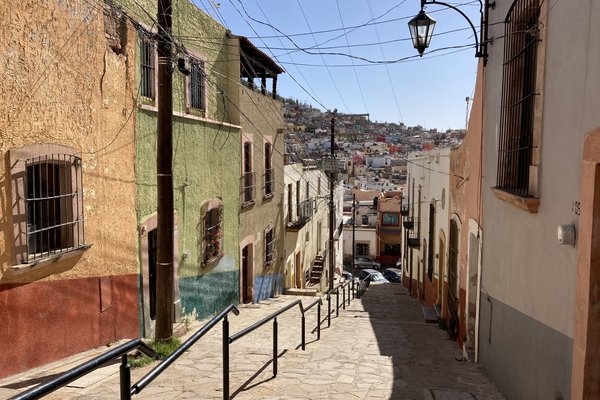Mexico
Zacatecas
The Historic Centre of Zacatecas comprises a well-preserved Spanish colonial mining town.
Silver was discovered here in the mid-16th century and the city soon became one of the chief mining centres of Mexico. Its original urban design has been preserved, with many of its streets being steep or at different levels due to the mountainous setting. Its notable religious and secular buildings mostly date from the 18th and 19th centuries.
Community Perspective: The pink Cathedral with its Churrigueresque façade is the highlight. You can get good views of the city from the Teleferico to El Eden mine, which can be visited underground as well. Jay’s review has more tips on what to see and do.
Site Info
Official Information
- Full Name
- Historic Centre of Zacatecas (ID: 676)
- Country
- Mexico
- Status
-
Inscribed 1993
Site history
History of Zacatecas
- 1993: Inscribed
- Inscribed
- Type
- Cultural
- Criteria
- ii
- iv
Links
- UNESCO
- whc.unesco.org
- Official
-
- zacatecastravel.com — Zacatecas
All Links
UNESCO.org
- whc.unesco.org — whc.unesco.org/
Official Website
- zacatecastravel.com — Zacatecas
News Article
- Feb. 15, 2014 capitaldezacatecas.gob.mx — ICOMOS Mexico denies that Zacatecas could be delisted
Community Information
- Community Category
- Urban landscape: Colonial
- Secular structure: Mines
Travel Information
Exact locations inscribed twice (or more)
Recent Connections
-
Perfect Inscriptions
1993 -
Reportedly haunted locations
"One of the most popular legends is the… -
Plateresque
Church of San Agustin: It has a platere…
Connections of Zacatecas
- Trivia
-
-
Built or owned by Spanish
The Zacatecos initially fought the permanent presence of the Spanish, but the mining potential of the area strengthened the Europeans' resolve and the natives were defeated in the 1540s (wiki) -
Modelled after
The 19th-century dome of the Cathedral is an imitation of the dome of the Church of Loreto in Mexico City. (wiki) -
Reportedly haunted locations
"One of the most popular legends is the legend of "Calle de las tres cruces". Here in 1761, two lovers— named Gabriel García and Beatriz Moncada— died in tragic circumstances, the legend says that the lovers ghosts appears in this street. (...) An other legend tells about a haunted backstreet named "Callejón del indio triste" where Xolotl, one of the last Chichimeca natives leaders, died during the 1550s. Another alleged haunted backstreet is known as "Callejón del mono prieto", where according to the legend, in the 17th century, a woman named Marciana Castillo died. The people believed that she practiced witchcraft (...)."See en.wikipedia.org
-
- History
-
-
Sieges and Battles
Battle of Zacatecas (1914) during the Mexican Revolution when Francisco Villa captured the town (wiki)See en.wikipedia.org
-
- Ecology
-
-
Liquid Mercury
"The market and commercial distribution of mercury are represented by the silverbearing sites of Mexico: ......the mines of Zacatecas (1993, criteria (ii) and (iv))" (AB for Almaden and Idrija)
-
- Architecture
-
-
Plateresque
Church of San Agustin: It has a plateresque facade decorated with a bas-relief. (wikivoyage) -
Churrigueresque
Cathedral -
Baroque
The Cathedral (1730-60) is a highly decorated Baroque structure (AB ev)
-
- World Heritage Process
-
-
Perfect Inscriptions
1993 -
Exact locations inscribed twice (or more)
Also on Camino Real de Tierra Adentro
-
- Religion and Belief
-
-
Jesuit Order
Santo Domingo and College -
Cathedrals
Cath Basil - Virgin of the Assump' -
Dominican Order
Church of Santo Domingo: It was taken over by the Dominicans when the Jesuits were expelled from Mexico in the 18th century. (wiki) -
Augustinian Order
The church of St. Agustine (ex-templo de San Agustín) was built by the religious order of San Agustín which arrived in the City of Zacatecas in 1575 (wiki)
-
- Human Activity
-
-
Gold production
The El Edén mine began operations in 1586 and principally produced gold and silver. (wiki) -
Silver production
Zacatecas was one of the principal centres of silver mining from the early Spanish period until the 20th century (OUV crit ii) -
Mints
The apogee of silver production in Zacatecas was in the 16th and 17th centuries, but then it was overtaken by Guanajuato, although it retained an important role as the site of a mint (AB ev)
-
- Constructions
-
-
Aqueduct
The El Cubo aqueduct was built at the end of the 18th century to carry water from the El Cubo mine area, which gave the structure its name. Only a few arches of it remain. (wiki) -
Theatres and Opera Houses
Calderon Theatre of 1834 -
Loggia
Sanctuary of Nuestra Sefiora del Patrocinio, with its observatory and loggia (1882) on the summit of La Bufa (AB ev) -
Suspended cable cars
Between Cerro de la Bufa and Cerro del Grillo is an aerial tramway or cable car that provides panoramic views of the city below. This cable car extends for about 650 meters, is called "El Teleférico" and was constructed in 1979 by the Swiss. (wiki)See es.wikipedia.org
-
Monumental Fountains
Colonial Tolosa fountain -
Equestrian Statues
Pancho Villa, On the summit of Cerro de la Bufa. The Cerro was the site of Villa's great victory at the Battle of Zacatecas (1914) in which the president's force of 12000 was wiped out. Next to him are equestrian statues of his fellows generals Panfilo Natera and Felipe Angeles
-
- Timeline
-
-
Built in the 16th century
Founded in 1548, and already the prominent mining town in the late 16th century
-
News
- capitaldezacatecas.gob.mx 02/15/2014
- ICOMOS Mexico denies that Zacateca…
Recent Visitors
Visitors of Zacatecas
- Alberto Rodriguez Gutierrez
- Alejandro Lau
- Alexander Lehmann
- Anna Wludarska
- Argo
- Atila Ege
- Bill Maurmann
- brendairala
- Cheryl
- Christine
- Clyde
- CynthiaSam
- Daniela Hohmann
- DutchHorn
- Els Slots
- Erik Jelinek
- Fan Yibo
- Feldhase
- Filip Murlak
- GeorgeIng61
- Harry Mitsidis
- headventure
- Iain Jackson
- Ivan Rucek
- Jarek Pokrzywnicki
- Javier Coro
- Jay T
- Jens
- Joel on the Road
- Jon Opol
- Kbooth
- Kurt Lauer
- Lara Adler
- Lucas Del Puppo
- Luis Filipe Gaspar
- Martina Rúčková
- Michael Ayers
- Michael Novins
- Mihai Dascalu
- Mikko
- nan
- Nihal Ege
- Petteri
- puessergio
- Randi Thomsen
- Reza
- Roger Ourset
- Roman Bruehwiler
- Sergio Arjona
- Shandos Cleaver
- Slavi
- Solivagant
- Stanislaw Warwas
- Svein Elias
- Szucs Tamas
- Tamara Ratz
- Thomas Buechler
- triath
- Westwards
- Wojciech Fedoruk
- Xiquinho Silva
- Zoë Sheng
Community Reviews
Show full reviews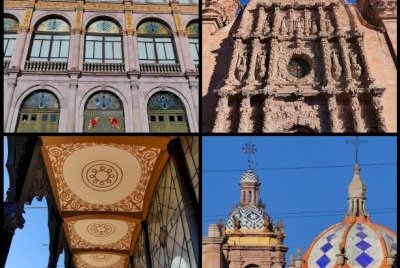
I visited this WHS in January 2022. As my 550th visited WHS, it will always have a special place in my memories, but my experience was further enhanced by meeting up with Zacatecas' director at the UNESCO World Heritage Regional Institute who was directly involved in Zacatecas' nomination and inscription on the WH list and is now mainly managing awareness-raising efforts at schools on UNESCO WHS and collaborating with Caribbean and Latin American states to promote existing WHS and add other tentative ones.
Just like Guanajuato, Zacatecas owes its historic monuments to the wealth generated by its silver and gold mines. It is also situated in a valley but not as narrow as in Guanajuato, and there is the Cerro de la Bufa's cableway which is an easy way to have a panoramic view over the city. For those that are not good with heights, be aware that the ride takes around eight minutes and one of the cablecars has a glass bottom too! From here the main tourist attraction, apart from the view, is the underground train tour inside the El Eden mine and the many bronze statues honoring important figures from the Battle of Zacatecas. Zacatecas is at an altitude of almost 2500 metres so exploring its many churches and sites was slightly more strenuous than other colonial cities and extremely cold in the morning (a bit like in Cusco, Peru).
The city cathedral at the heart of the historic centre is one of the best …
Keep reading 0 comments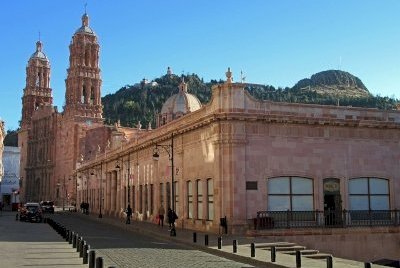
The Historic Centre of Zacatecas was a delight, and the highlight of my November trip through central Mexico. Zacatecas takes a bit of planning to reach, but it was well worth the six hour detour from the cluster of World Heritage Sites near Querétaro.
Silver mines put Zacatecas on the map, and funded the rich Baroque architecture seen in the stunning cathedral, as well the Temple of Santo Domingo and the Governor's Palace in the Plaza de Armas. Early in its history, the mines also brought missionaries traveling along the Camino Real, such as the Franciscans, who founded the former San Francisco convent (site of one of two World Heritage Site plaques I found in the historic center), and the Augustinians, who founded the Temple of San Agustin. On my one day in Zacatecas, I spent a couple early hours visiting the churches that were open and admiring the architecture, and then strolling the relatively quiet streets (likely because it was Revolution Day, one of Mexico's public holidays). The neo-classical facade of the Calderon theater was beautiful, and the small plazas scattered around the city were a peaceful way to start the day.
I had two sites I definitely wanted to see when I was in Zacatecas. The first was the overlook from La Bufa, the imposing bluff overlooking the city. La Bufa played a significant role in 1914 during the Mexican Revolution, as Pancho Villa successfully wrested the hill from federal troops before taking the city of …
Keep reading 0 comments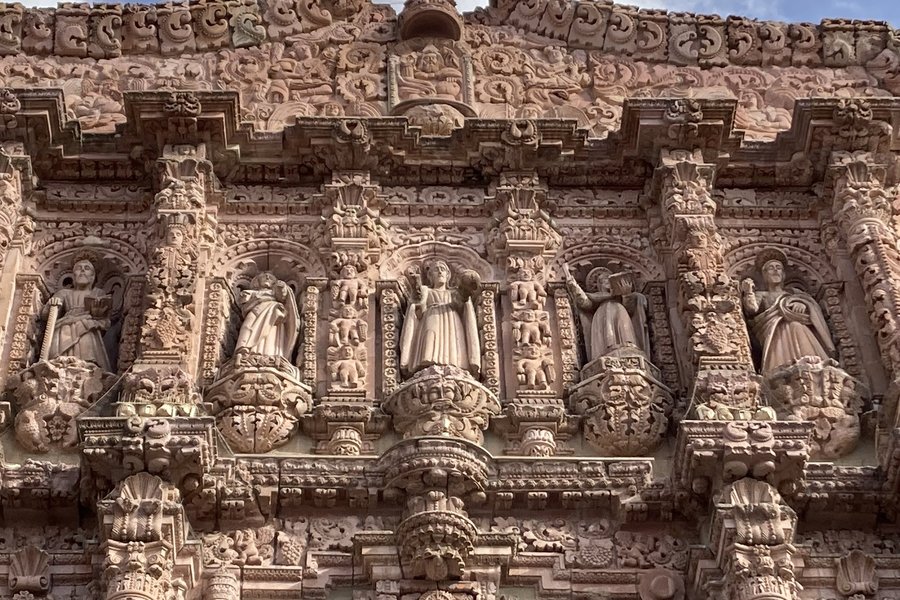
Zacatecas is beautiful. It feels as if you are in a Europe. Italy maybe? Absolutely wonderful. You can really feel the positive energy in the air. There is something about this city that makes you not want to leave.I think it's because there is a certain intimacy you feel with city.
Keep reading 0 comments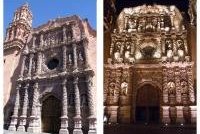
As a “colonial” centro historico Zacatecas has a number of similarities with Guanajuato – particularly its setting in a deep(ish) valley and its wealth from Silver. We visited it first and were quite impressed – until we saw Guanajauto! Michelin has it about right when it grants Guanajuato *** (worth a journey) and Zacatecas ** (worth a detour).
With a population of about 130000 it is significantly larger then Guanajuato. Its valley is less confined and it has spread more with a surrounding and unattractive suburban area but the centre is pleasant and relaxed – albeit not traffic free. The city lies at an altitude of 8000ft – which you will feel if you do much walking! The cathedral (photo 1) is perhaps the only building which trumps Guanajuato’s offering with its magnificent “pinkish” façade - its floodlit appearance at night is particularly fine (photo 2). Beyond that there is the usual range of “niche” museums (covering, inter alia, Surrealist Art and Indigenous Masks), pleasant gardens, squares, colonial streets, mansions etc. We didn’t take the teleferico which, unlike Guanjuato’s funicular, actually crosses over the city from one side to the other – but then Zacatecas has no viewpoint quite like Pipila. An interesting “non-UNESCO” visit is to the Quinta Real Hotel built around Zacatecas’s bull ring – the (expensive for Mexico but not so much in European terms) restaurant is built into the seating tiers. It is at least worth going into.
Keep reading 0 comments
